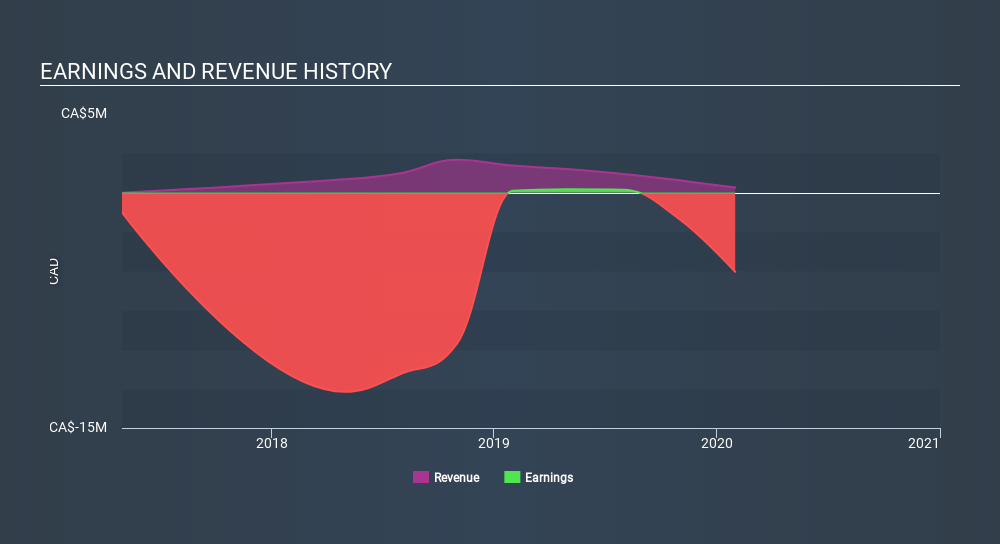Anyone researching FinCanna Capital Corp. (CSE:CALI) might want to consider the historical volatility of the share price. Modern finance theory considers volatility to be a measure of risk, and there are two main types of price volatility. First, we have company specific volatility, which is the price gyrations of an individual stock. Holding at least 8 stocks can reduce this kind of risk across a portfolio. The other type, which cannot be diversified away, is the volatility of the entire market. Every stock in the market is exposed to this volatility, which is linked to the fact that stocks prices are correlated in an efficient market.
Some stocks are more sensitive to general market forces than others. Beta is a widely used metric to measure a stock's exposure to market risk (volatility). Before we go on, it's worth noting that Warren Buffett pointed out in his 2014 letter to shareholders that 'volatility is far from synonymous with risk.' Having said that, beta can still be rather useful. The first thing to understand about beta is that the beta of the overall market is one. Any stock with a beta of greater than one is considered more volatile than the market, while those with a beta below one are either less volatile or poorly correlated with the market.
Check out our latest analysis for FinCanna Capital
What we can learn from CALI's beta value
Zooming in on FinCanna Capital, we see it has a five year beta of 0.53. This is below 1, so historically its share price has been rather independent from the market. This suggests that including it in your portfolio will reduce volatility arising from broader market movements, assuming your portfolio's weighted average beta is higher than 0.53. Share price volatility is well worth considering, but most long term investors consider the history of revenue and earnings growth to be more important. Take a look at how FinCanna Capital fares in that regard, below.

Could CALI's size cause it to be more volatile?
With a market capitalisation of CA$5.5m, FinCanna Capital is a very small company by global standards. It is quite likely to be unknown to most investors. It is not unusual for very small companies to have a low beta value, especially if only low volumes of shares are traded. Even when they are traded more actively, the share price is often more susceptible to company specific developments than overall market volatility.
What this means for you:
Since FinCanna Capital is not heavily influenced by market moves, its share price is probably far more dependent on company specific developments. It could pay to take a closer look at metrics such as revenue growth, earnings growth, and debt. This article aims to educate investors about beta values, but it's well worth looking at important company-specific fundamentals such as FinCanna Capital’s financial health and performance track record. I urge you to continue your research by taking a look at the following:
- Future Outlook: What are well-informed industry analysts predicting for CALI’s future growth? Take a look at our free research report of analyst consensus for CALI’s outlook.
- Financial Health: Are CALI’s operations financially sustainable? Balance sheets can be hard to analyze, which is why we’ve done it for you. Check out our financial health checks here.
- Other High-Performing Stocks: Are there other stocks that provide better prospects with proven track records? Explore our free list of these great stocks here.
If you spot an error that warrants correction, please contact the editor at editorial-team@simplywallst.com. This article by Simply Wall St is general in nature. It does not constitute a recommendation to buy or sell any stock, and does not take account of your objectives, or your financial situation. Simply Wall St has no position in the stocks mentioned.
We aim to bring you long-term focused research analysis driven by fundamental data. Note that our analysis may not factor in the latest price-sensitive company announcements or qualitative material. Thank you for reading.
About CNSX:CALI.X
Moderate risk and slightly overvalued.
Market Insights
Community Narratives




